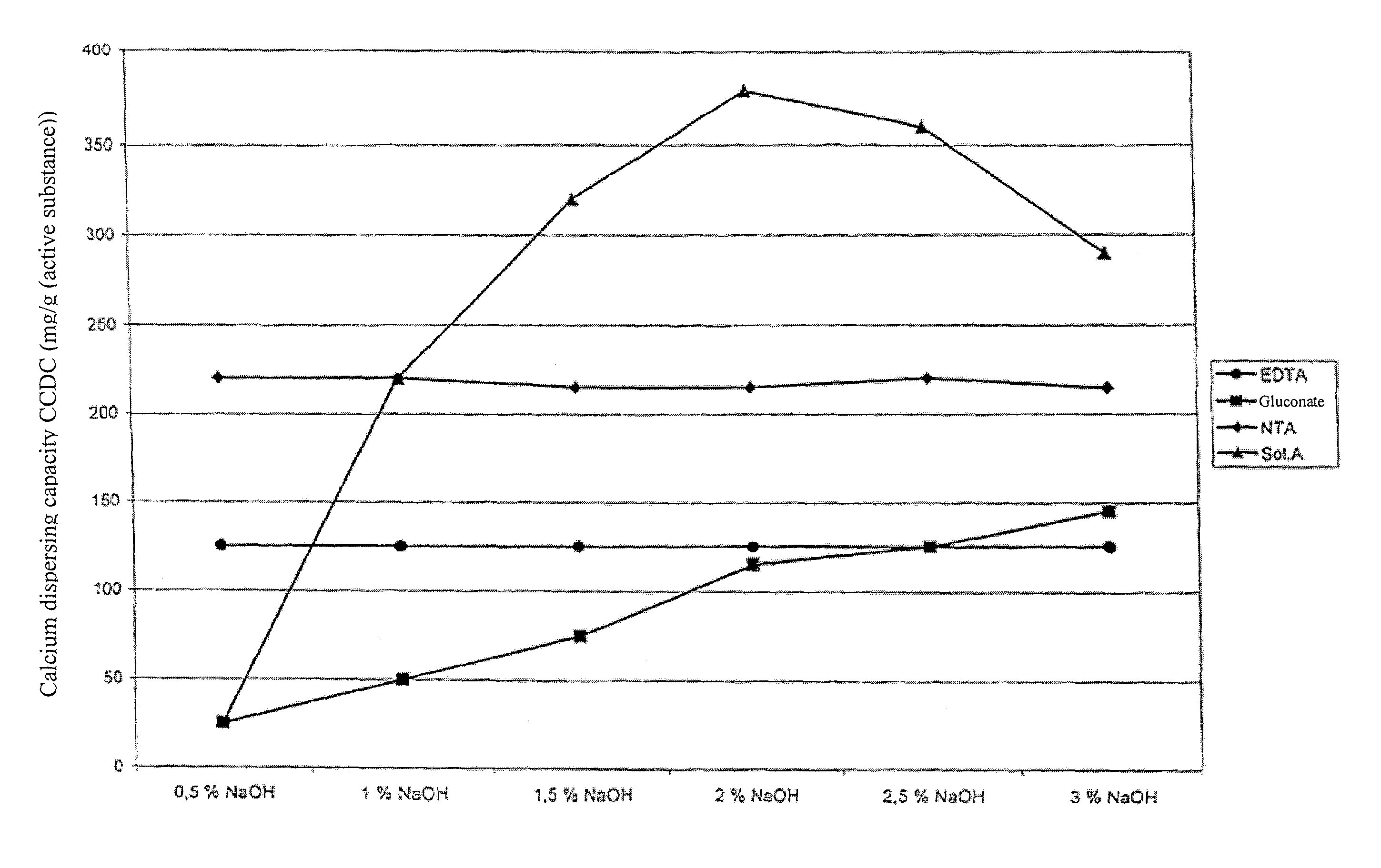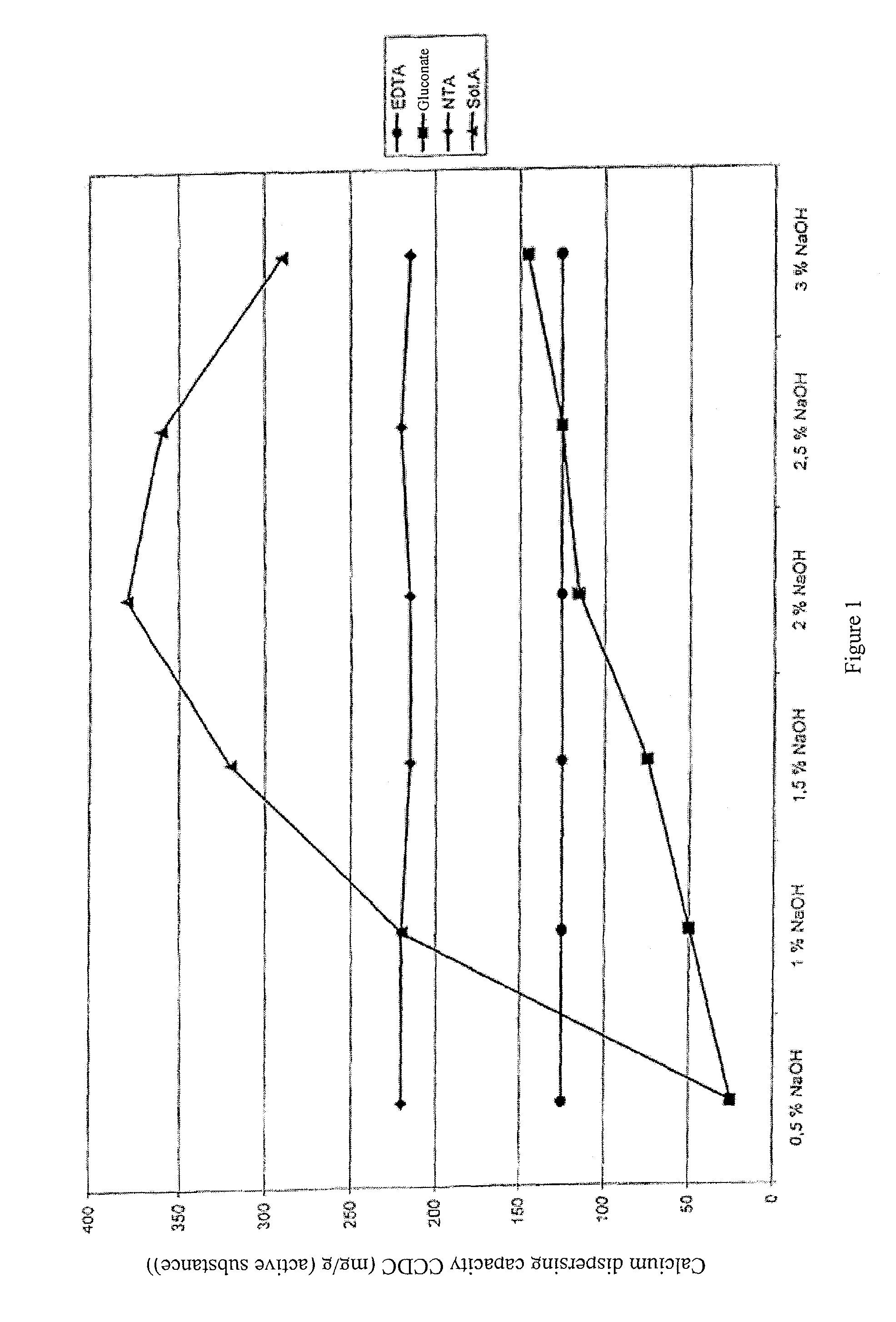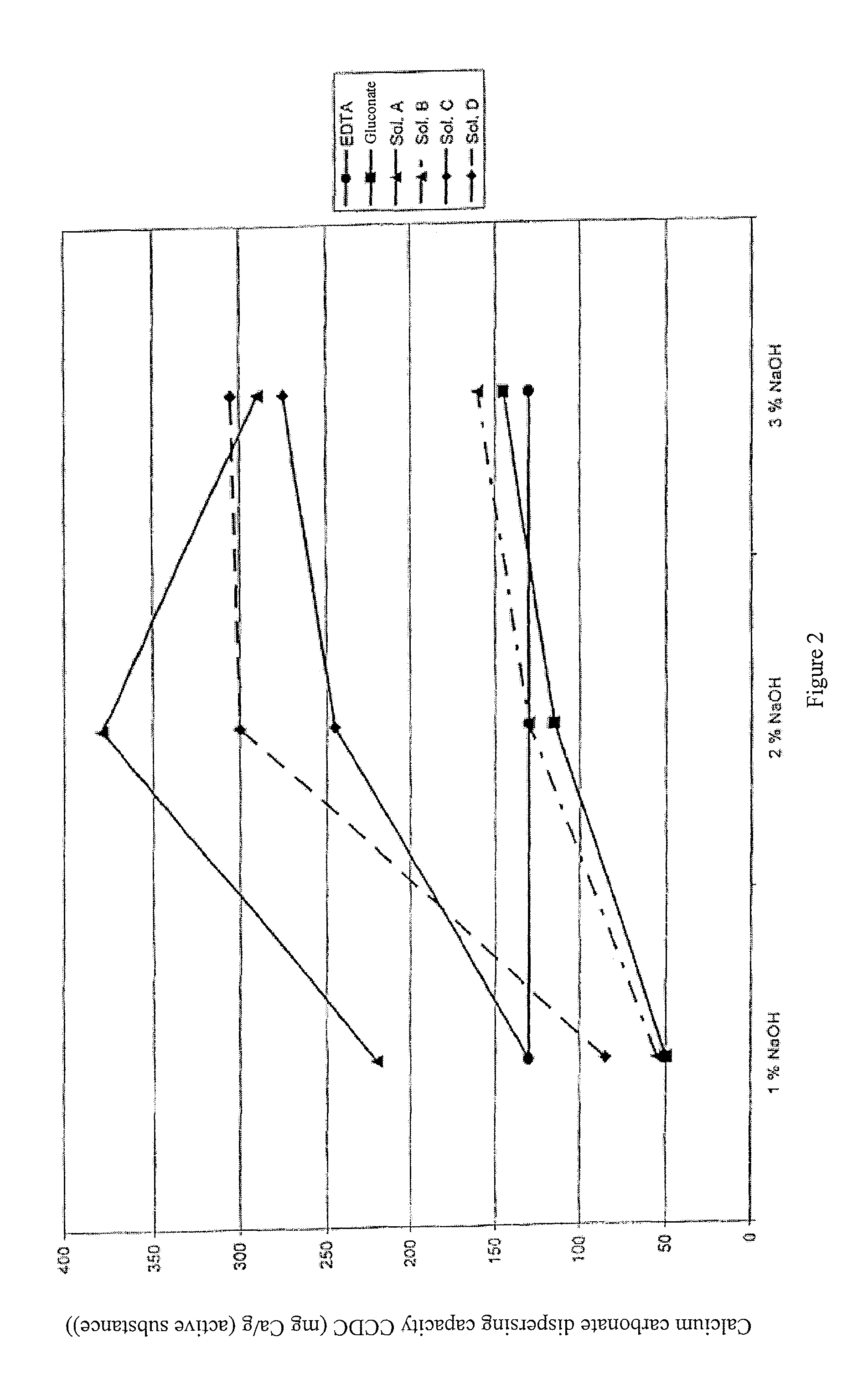Starch hydrolyzate solubilizer for metal ions
a technology of starch hydrolyzate and metal ions, which is applied in the preparation of sugar derivatives, non-ionic surface active compounds, chemical/physical processes, etc., can solve the problems of high water content in the product, and many problems in the field of metal salts
- Summary
- Abstract
- Description
- Claims
- Application Information
AI Technical Summary
Benefits of technology
Problems solved by technology
Method used
Image
Examples
example 1
Preparation of a Solubilizing Agent in Accordance with the Invention (Sol. D)
[0099]A solution of a commercially available technical starch hydrolyzate was oxidized on an Al2O3-supported gold catalyst in a stirred vessel. The reaction conditions were: T=40-80° C., pH=7-11, p=1-25 bar O2. The pH of the reaction suspension was kept constant by titration with sodium hydroxide. The reaction was carried out to complete conversion. At the end of the reaction the catalyst was separated by filtration. The resulting oxidized syrup could be concentrated (65-75% DM) without further purification by suitable simple processes (dehydration) and used as a storable solubilizing agent.
example 2
Comparison Measurements of Calcium Carbonate Dispersing Capacity of a Solubilizing Agent in Accordance with the Invention
[0100]The calcium carbonate dispersing capacity (CCDC) of a solubilizing agent in accordance with the invention was compared with the CCDC of solubilizing agents from the prior art. A selectively C1-oxidized product from the oxidation of a starch hydrolyzate with dextrose equivalent (DE) of 55-60 and with 90 wt % DP2 compounds (Sol. A) was used as the solubilizing agent in accordance with the invention.
[0101]The dextrose equivalent (DE) was determined in a substantially known way by determining the reducing fractions of the composition, in particular following Fehling.
[0102]The CCDC was compared with that of the EDTA, NTA and Na gluconate. The CCDC values were determined in accordance with F. Richter and E. W. Winkler (Calcium Binding Capacity, Tenside Surfactants Detergents 24 (1987), pp. 213-216). The CCDC was measured at NaOH concentrations of 0.5, 1, 1.5, 2, 2...
example 3
Comparison Measurements of the Calcium Carbonate Dispersing Capacity of Different Solubilizing Agents in Accordance with the Invention
[0104]In addition to the solubilizing agent in accordance with the invention from Example 2 (called Sol. A in what follows), three other solubilizing agents (Sol. B, Sol. C and Sol. D) in accordance with the invention were prepared. For this, starch hydrolyzates with different DE values and contents of DP2 and DP3 were oxidized in accordance with Example 1.
[0105]Sol. B was prepared from a starch hydrolyzate with a DP2 content of 5% and a dextrose equivalent (DE) of about 95. Sol. C was prepared from a starch hydrolyzate with a DP2 content of 40-46% and a DE of 40-45. Sol. D was prepared from a starch hydrolyzate with a DP content of 70-80% and a DE of about 50-55.
[0106]The CCDC of Sols. A, B, C and D was compared with that of gluconate and EDTA. The CCDC values were determined as in Example 2. The CCDC values were measured at NaOH concentrations of 1,...
PUM
| Property | Measurement | Unit |
|---|---|---|
| pH | aaaaa | aaaaa |
| pH | aaaaa | aaaaa |
| pressure | aaaaa | aaaaa |
Abstract
Description
Claims
Application Information
 Login to View More
Login to View More - R&D
- Intellectual Property
- Life Sciences
- Materials
- Tech Scout
- Unparalleled Data Quality
- Higher Quality Content
- 60% Fewer Hallucinations
Browse by: Latest US Patents, China's latest patents, Technical Efficacy Thesaurus, Application Domain, Technology Topic, Popular Technical Reports.
© 2025 PatSnap. All rights reserved.Legal|Privacy policy|Modern Slavery Act Transparency Statement|Sitemap|About US| Contact US: help@patsnap.com



